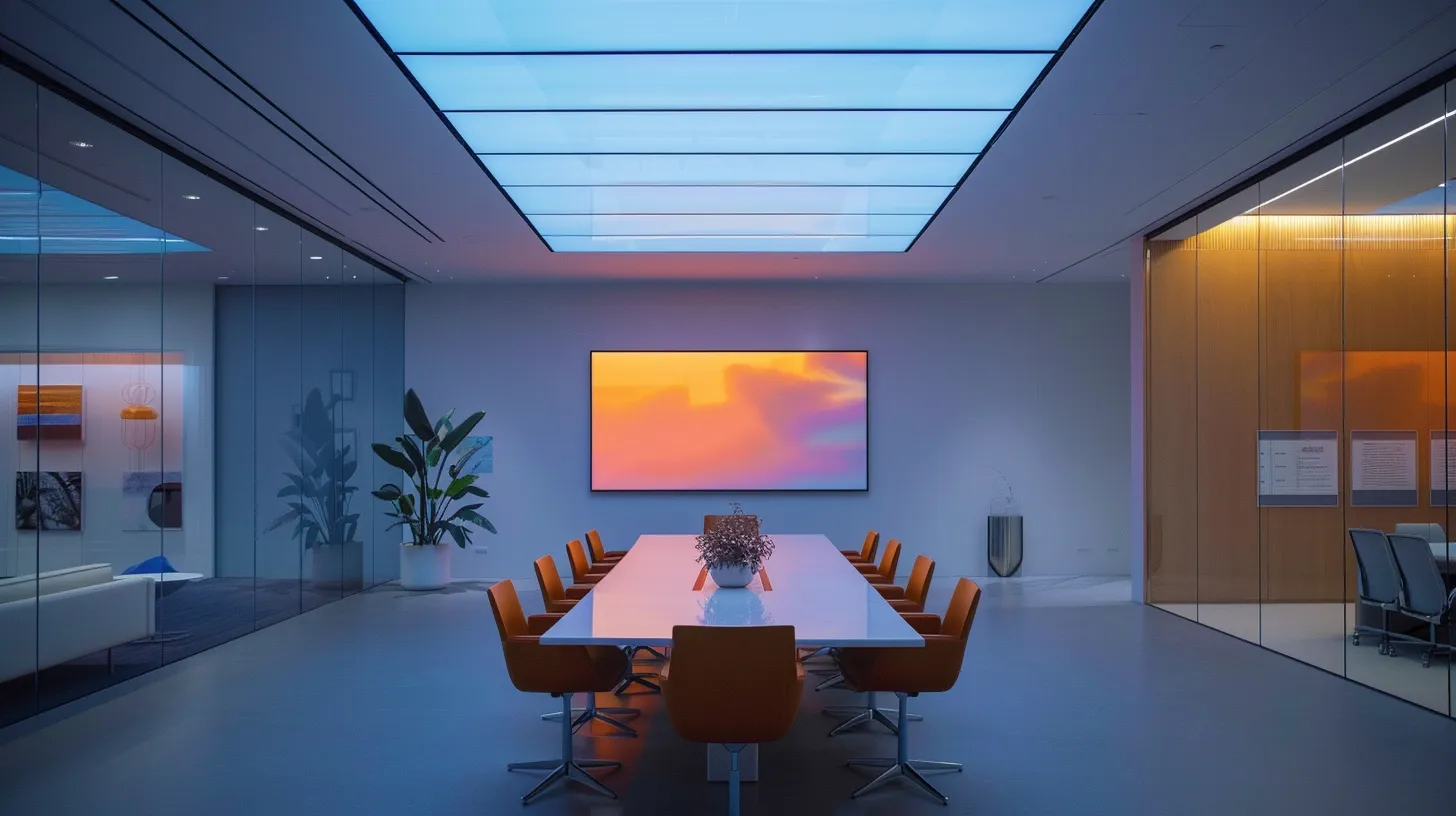Table Of Contents:
- What to Expect: Average Turnaround Times for Sliding Door Glass Repair Projects
- Understand Typical Turnaround Time for Sliding Door Glass Repairs
- Analyze Common Issues That Require Sliding Door Glass Repair
- Discover Steps for Scheduling a Sliding Door Glass Repair
- Investigate the Repair Process for Sliding Door Glass
- Assess the Importance of Maintenance After Repair
- Evaluate Costs Associated With Sliding Door Glass Repairs
- Conclusion
What to Expect: Average Turnaround Times for Sliding Door Glass Repair Projects
Having a sliding door with a broken glass panel can be a real hassle. You might be wondering how long it will take to get it fixed. In this post, we’ll discuss the average turnaround times for sliding door glass repairs, common issues that lead to repairs, and the steps to schedule your service. By understanding the repair process and maintenance tips, you’ll be better prepared to get your sliding door back in working order. This guide will address your concerns and help you minimize downtime.
Understand Typical Turnaround Time for Sliding Door Glass Repairs

Repair times for sliding door glass can vary based on the severity of the damage. You’ll want to consider factors like whether you need a sliding track replacement, glazing, or if the materials involved are metal. Additionally, you might choose to work with perfect sliding doors.
Learn About Average Repair Times Based on Severity of Damage
When it comes to repairing sliding door glass, the severity of the damage will significantly influence turnaround times. For minor issues, like scratches on a wood or steel frame, you might expect repairs to take just a few hours. However, if you’re facing a more serious problem, such as a complete glass replacement or a malfunctioning track, it could take a full day or two to restore everything to a state that reflects the high reputation of your home’s appearance.
If you’re in an emergency situation, such as broken glass posing a safety risk, you should seek immediate service. Many repair professionals, including those who specialize in sliding doors and windows, understand the urgency that comes with an emergency and aim for fast turnaround times, often prioritizing customer satisfaction in these scenarios. Getting quick assistance can save you a lot of hassle, allowing your space to feel secure and functional again in no time.
Recognize Factors Influencing Turnaround Time for Repairs
When you’re looking at repair times for your sliding door glass, several factors come into play. The type of door, whether it’s a patio or a garage door, can affect how long repairs take. Additionally, if your sliding door is part of a larger cabinetry structure or wall space, this might require more intricate work, extending the overall timeline.
Another important consideration is the condition of your existing materials. If your sliding door‘s track is damaged or your glass has shattered, this can shift the urgency and complexity of the repair. For instance, replacing glass in a simple framework might be quicker than fixing structural issues surrounding a sliding door in a more detailed cabinetry setup. Understanding these elements can help you better anticipate how long repairs will take and ensure you address any potential delays upfront.
Evaluate Urgency and Its Impact on Service Speed
When you’re dealing with a broken sliding door, urgency can really change how fast you get help. If you have safety glass that’s shattered or water damage affecting your door’s functionality, it’s essential to reach out for services immediately. Many professionals, including those who handle fiberglass and argon glass, understand that quick fixes can make all the difference in keeping your home secure and comfortable.
In emergency situations, you may find that certain companies prioritize urgent requests. This means that if your sliding door is not only an eyesore but also a safety risk, you could receive expedited service. Knowing the urgency of your circumstances can help both you and your repair expert come up with the best plan to resolve the issue swiftly and effectively, so you can return to enjoying your space without worry.
It’s crucial to know how long repairs typically take. Understanding the common problems can help you prepare for what comes next.
Analyze Common Issues That Require Sliding Door Glass Repair

You’ll want to recognize some typical problems with sliding door glass systems that can require repairs. This includes understanding how the level of damage impacts repair speed, as well as identifying signs that signal an immediate need for repair. Weather conditions can also play a role in glass damage. Each of these factors helps you manage repairs effectively, especially when dealing with emergencies, and how warranties might protect your investment during inspections or construction.
Identify Typical Problems With Sliding Door Glass Systems
When you’re dealing with sliding door glass systems, there are a few common problems you might run into. One issue is the track malfunction, which can happen due to dust or debris buildup affecting aluminium tracks. If you notice difficulty in sliding your door or hear unusual sounds, it’s a signal that your track needs attention before it leads to a bigger repair.
Another frequent concern is with the glass itself, such as scratches on laminated glass or coating issues. If your door has a plastic frame, you might come across cracks that can jeopardize the glass’s stability. Recognizing these problems early can help you secure a reliable repair, ensuring both safety and function so you can enjoy your living space without compromise.
Explore the Relationship Between Damage Level and Repair Speed
When it comes to sliding glass door repairs, the level of damage directly impacts how quickly you can expect the work to be completed. For instance, if you’re facing minor issues like scratches on tempered glass or excessive wear on the sliding tracks, these repairs can usually be wrapped up in just a few hours. On the other hand, if your door has suffered serious damage, like a complete glass breakage or problems involving a revolving door setup, the turnaround time could stretch to a day or even longer, depending on what’s needed to restore everything safely.
Understanding how damage level affects repair speed is essential for planning your repair project. If you know you have a cracked shower door or a significant issue with your sliding glass door, reaching out for help sooner rather than later can make a big difference. By addressing these problems before they escalate, you can ensure quicker fix solutions and maintain the overall safety and aesthetics of your space. If you’re curious about how we handle each situation, check out the “about us” section for more insight into our approach.
Recognize Signs That Indicate Immediate Need for Repair
When it comes to sliding door glass systems, it’s important to watch for signs that indicate an immediate need for repair. If you notice cracks in the glass or peeling lamination, this could compromise the safety and functionality of your doors. Additionally, excessive wear and tear on the sliding track should not be ignored; if your door has trouble gliding smoothly, it may be time to address the issue before it leads to more significant damage.
Another critical sign to look out for is if you find foam or insulation coming loose around the edges of the door. This can indicate water infiltration, which can damage your sliding door’s structure over time. Quick action can help with both commercial glass repair and residential needs, ensuring your doors remain functional and aesthetically pleasing while preventing further issues down the road.
Understand How Weather Conditions Can Affect Glass Damage
Weather can have a significant impact on your sliding door glass, especially in areas dealing with intense heat and ultraviolet rays. For instance, prolonged exposure to high temperatures can lead to warping of surrounding materials like plywood, which can compromise the door‘s functionality. If your sliding door is in a bathroom, the combination of humidity and heat might also encourage mold growth, resulting in further issues that require timely repair.
Low emissivity glass can help mitigate some of these concerns by reflecting heat and ultraviolet rays, but it’s not a complete shield. Even with protective features, fluctuating weather conditions can create stress on your glass and frame, leading to cracks or seals failing over time. Being mindful of these environmental factors allows you to address potential problems early, ensuring you maintain a safe and functional living space.
Now that you’ve uncovered the common problems with sliding doors, you may wonder how to get them fixed. Let’s explore the steps to schedule your sliding door glass repair and bring back the ease of movement you desire.
Discover Steps for Scheduling a Sliding Door Glass Repair

Before reaching out for a sliding door glass repair, it’s important to assess the damage in your room. Understanding the issues at hand will help you communicate effectively with your service provider. Seeking multiple quotes ensures you find the best options that fit your budget. Be ready with all necessary details to enhance the process, including specifics about pocket doors and safety concerns, to navigate any situation smoothly.
Find Out How to Assess the Damage Before Calling a Service
Before reaching out for window repair services, take a good look at your sliding door and assess its condition. Check for any visible wear, such as cracks in the glass or problems with the track that could affect functionality. This gives you an idea of what needs attention and shows the repair expert that you’re serious about maintaining the beauty and efficiency of your sliding door.
Consider noting any issues you’re experiencing, like difficulty in sliding the door or signs of water damage. When you communicate these details to the expert, it helps them provide a faster and more accurate estimate for your repair. Having this information ready can save you time and ensure your door is restored to its original pride and function without any unnecessary delays.
Understand the Importance of Getting Multiple Quotes
When you’re facing a sliding door glass repair, getting multiple quotes is key to making an informed decision. It allows you to compare prices and customer service from different providers, ensuring you receive the best deal for your needs without compromising quality. For instance, if you find a quote for a new PGT window at a certain price per inch, don’t hesitate to check with a couple of other companies to see if you can land a better offer or additional perks.
Additionally, seeking multiple quotes helps ensure that the companies you’re considering pay attention to your specific situation and requirements. This way, you can gauge their expertise and willingness to work with you based on your unique project. By taking the time to gather these quotes, you’ll not only save money but also feel more confident in your choice, knowing that you’re investing wisely in your sliding door repair service.
Prepare Necessary Information for the Service Provider
When you reach out to a service provider for sliding door glass repair, having the right information ready can make the process smoother. You’ll want to share specifics about the type of damage, such as cracks in the glass or issues with the track. This not only helps the expert understand the situation but also showcases your commitment to proper workmanship in your home.
Along with details about the damage, be prepared to discuss any unique features of your sliding door system. Information about the door‘s make and model and any past repairs will be valuable for the technician. This way, they can assess what’s needed quickly and efficiently, helping you get back to enjoying your space without any hassles.
Scheduling a repair is just the beginning. Let’s dive into how the process unfolds, and what steps you’ll take to restore that sliding door to its former state.
Investigate the Repair Process for Sliding Door Glass

During the repair process for sliding door glass, you’ll first encounter the inspection phase, where experts assess the damage to determine the necessary repairs. You’ll also get familiar with common techniques used, from track adjustments to complete glass replacements. Understanding these methods and their associated timelines helps you set realistic expectations for your repair project and keeps things running smoothly.
Learn What to Expect During the Inspection Phase
During the inspection phase of your sliding door glass repair, an expert will thoroughly check the condition of your door and its components. They’ll look for issues such as broken glass, damaged tracks, or hardware that may need replacement. This assessment helps you understand the specific repairs needed and sets the stage for estimating turnaround times, ensuring a smoother repair process.
Once the inspection is complete, you can expect the technician to explain their findings and recommend appropriate solutions. They might provide insights on whether a simple repair will suffice or if a full replacement is necessary. Knowing these details empowers you to make informed decisions while keeping in mind the expected timelines for your project, helping you get back to enjoying your space as soon as possible.
Review Common Repair Techniques for Sliding Door Systems
When it comes to repairing sliding door systems, one common technique involves adjusting the track. If your sliding door isn’t gliding smoothly, a technician will typically inspect the track for any debris or damage and make necessary adjustments. This quick fix can often have your door functioning well again within a few hours, minimizing any inconvenience you face.
Another common approach is replacing damaged glass in the sliding door. If you have a cracked panel, the technician will carefully remove the broken glass, measure for the replacement, and install a new, properly fitted piece. This process can take longer, usually around a day or so, but it ensures that your door not only looks great but is also safe and secure for daily use.
Understand the Timeline Associated With Different Repair Methods
Understanding the timeline associated with different repair methods for sliding door glass can help you plan your project effectively. For a simple adjustment of the track, which is a common issue, you can expect the repair to be completed within a few hours. This quick fix enhances the functionality of your door with minimal downtime.
On the other hand, if your sliding door requires a complete glass replacement, you might be looking at a turnaround time of one day or more. This process involves careful removal of the broken glass, precise measurements for the new panel, and installation to ensure everything is secure. Knowing these timelines can help you manage your expectations and make arrangements for any necessary changes in your space.
The repair of your sliding door is only the beginning. Keeping it in good shape demands your attention and care.
Assess the Importance of Maintenance After Repair

Taking care of your sliding doors after a repair is essential for keeping them in great shape. You’ll want to explore routine maintenance tips that enhance their longevity and look for signs that could indicate further repair needs soon after. Learning how to keep your sliding doors operating smoothly is key to avoiding future headaches and ensuring they function well for years to come.
Explore Routine Maintenance Tips for Sliding Door Longevity
To keep your sliding doors functioning smoothly, regular maintenance is key. Make it a habit to clean the tracks of dirt and debris since this buildup can cause your door to stick or jam. A quick wipe with a cloth or a gentle vacuum can do wonders for maintaining easy operation and prolonging the life of your sliding door.
In addition to cleaning, check the seals and hardware on a regular basis. Look for signs of wear or damage, like cracking or loose screws, that could indicate potential issues down the line. Taking these proactive steps will help you avoid costly repairs and ensure your sliding doors continue to operate well for years to come.
Identify Signs That Indicate Further Repair Needs Soon After
After your sliding door glass repair, be attentive to any signs that may indicate further repair needs. If you notice cracks developing soon after the work is completed, it might suggest an installation issue or that the new glass isn’t secured properly. Keeping an eye on the door’s functionality is also key; if it starts to stick or you hear unusual noises when sliding it, those could be warning signs that not all issues were addressed during the repair.
Additionally, check for water infiltration around the edges of the sliding door. If you see condensation between the glass panes or any moisture collecting around the frame, this could point to a failing seal that might require immediate attention. Addressing these signs quickly can help you avoid bigger problems and maintain the aesthetic appeal and safety of your space.
Learn How to Keep Sliding Doors Operating Smoothly
To keep your sliding doors operating smoothly, regular maintenance is key. A simple habit like cleaning the tracks from dirt and debris can make a huge difference. You’d be surprised how often just vacuuming or wiping down the tracks can help your door glide effortlessly, preventing future issues like sticking or jamming.
It’s also important to inspect the seals and hardware regularly. Look for any signs of wear, like cracked seals or loose screws, which can lead to bigger problems down the line. By staying on top of these small checks, you can ensure your sliding doors remain functional and safe, saving you time and hassle when it comes to repairs.
Taking care of your sliding door after a repair keeps it working well for years. But as you consider your options, it’s wise to weigh the costs of those glass repairs before making a decision.
Evaluate Costs Associated With Sliding Door Glass Repairs

When it comes to sliding door glass repairs, it’s important to grasp the typical expenses based on the damage type you are dealing with. You’ll also want to keep an eye out for any hidden costs that may pop up during repairs. Plus, understanding the cost differences between repair and replacement will help you make informed decisions about how to proceed. Each of these factors has a significant impact on the total investment for your project.
Review Typical Expenses Based on Different Damage Types
When you’re looking at the costs associated with sliding door glass repairs, it’s essential to understand how the type of damage affects pricing. For minor scratches or an issue with the sliding track, you might be looking at a bill of a couple of hundred dollars, which is often manageable for most homeowners. However, if the glass itself is broken and needs complete replacement, your expenses can rise significantly, potentially reaching the range of several hundred to over a thousand, depending on the size and type of glass required.
Another factor to consider is whether additional repairs are needed beyond just the glass replacement. If there’s been damage to the frame or hardware, that will add to your timeline and costs. Being upfront about what you notice with your sliding door will help your repair expert provide a more accurate estimate and avoid surprise charges down the road. By understanding these potential expenses, you’re better equipped to make informed decisions about your sliding door repairs.
Understand Hidden Costs That Might Arise During Repairs
When considering sliding door glass repairs, be aware that additional costs can come into play beyond just the visible damage. Sometimes issues can be uncovered during the repair process, like hidden frame damage or failing seals that weren’t apparent at first glance. These unexpected repairs can add up, so it’s wise to discuss potential scenarios with your service provider ahead of time to avoid surprises.
Moreover, specific features of your sliding door system might require specialized parts or additional labor, which can also increase costs. For example, if you have a custom frame or a unique type of glass, sourcing replacements may take longer and cost more. Being upfront about the specifics of your door can help in getting a more accurate estimate and managing your budget effectively during the repair process.
Compare the Costs of Repair Versus Replacement Options
When considering your sliding door options, weighing the costs of repair versus replacement is important. Minor issues like scratches or a misaligned track typically involve lower repair costs, often ranging from a couple of hundred dollars. On the other hand, if you’re facing significant damage, such as shattered glass, you might be looking at high expenses for replacement that could exceed a thousand dollars, depending on the type of glass and frame involved.
Understanding the long-term implications of each choice can help with your decision. Repairs can be a quick and budget-friendly solution, especially if your sliding door still has a sturdy frame. However, if your door continues to have repeated issues or shows signs of more extensive wear, investing in a replacement might be a more reliable and cost-effective choice in the long run. Doing so ensures you’re not just throwing money at temporary fixes, but rather making a solid investment in the safety and functionality of your space.
Conclusion
Knowing what to expect regarding average turnaround times for sliding door glass repairs is crucial for effective planning and prompt action. Factors like the severity of damage, material conditions, and urgency dramatically influence how quickly repairs can be completed. Understanding these elements helps you communicate better with service providers and ensures your space remains secure and functional. By being proactive and informed, you can minimize downtime and maintain the visual appeal and safety of your home.




